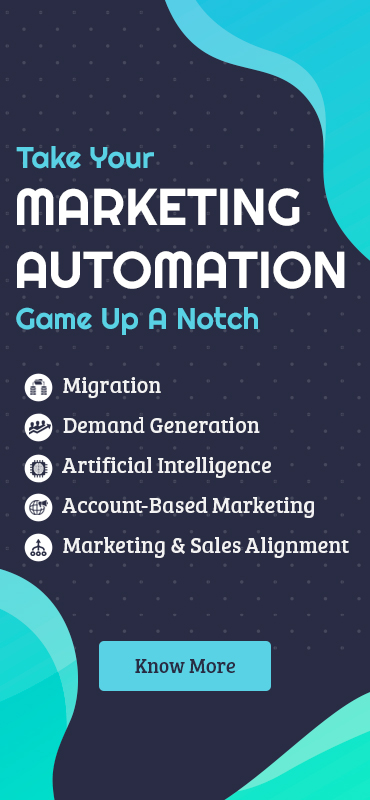So what is marketing automation? As per The Definitive Guide to Marketing Automation by Marketo, marketing automation is the technology that allows companies to streamline, automate, and measure marketing tasks and workflows so they can increase operational efficiency and grow revenue faster.
According to Gartner, by 2020 customers will manage 85% of their relationship without talking to a human. To engage such evolved buyers, marketing automation is and will be one of the most successful technologies. Moreover, as per Sirius Decisions, by 2015 the adoption of marketing automation technology is expected to increase by 50%.

Steps To Implement Marketing Automation
Getting started with marketing automation is no rocket science. All it takes are a few simple steps that revolve around your existing marketing tasks and workflows. Read on to know more:
-
Review existing marketing content:
To begin with, analyze your existing content and identify at what stage of the buying cycle this content fit in. Evaluate your existing landing pages, mailers, webinars, forms, auto-responders, and other marketing collaterals. For instance, a case study that is a solution-oriented content will be more suitable for a customer closer to the end funnel. Besides identifying, you need to create multiple content pieces to generate interest during every stage of the funnel.
-
Synchronize with your CRM solution or lead database:
In order to synchronize lead and customer data across platforms, you need to integrate your existing CRM with your marketing automation tool. The integration updates the details, enabling you to view all of your lead activity on a single platform. For instance-when a sales rep marks a lead as unqualified, it is automatically reflected in MA and the lead will not be considered for further nurturing.
-
Segment your target audience:
By segmenting your target audience, you can send relevant content to your leads. There are two main ways to segment your leads – implicitly or explicitly. You can read more about the detailed list in Marketo’s Definitive Guide to Lead Scoring.
-
Creating a workflow for leads:
A workflow is an automated program that you can trigger, based on the lead behavior. It allows you to send the right message to the right person at the right time. For instance- your promising lead responds better to emails over weekends. You can set up a workflow that sends triggered emails only over weekends. Similarly for all the leads, you can add the day and timing in the tool, and the entire process will be automated.
-
Define lead scoring parameters for identifying sales ready leads:
For optimizing your sales funnel, you can score your leads on different parameters or their engagement level. For instance-you can score leads on basis of their website history like page views, clicks, downloads, newsletter subscription, registration etc. By setting up the lead scoring campaign, you can easily filter your sales ready leads and can better target your communication.
-
Set up lead engagement campaigns:
After segmenting you leads and customizing the content, move on to engaging your leads. Leads are better engaged when they see that the email that they are receiving and the sales reps who are contacting them, “understand” their unique needs. When people see, you understand their needs they respond better to your marketing and this in-turn helps you gain insights, which can improve you future marketing tasks.
-
Campaigning:
Now after identifying which leads are in which stage of the funnel, you can set up customized campaigns. Such targeted campaigning will help you maximize the revenue through each segment.
-
Review and revise:
Once you have executed your campaigns, it is crucial to evaluate the results. Pay close attention to the way people respond to each of your campaigns. Analyze the response rate and engagement level to decide your future course of action. Whatever is not working needs to be changed/removed. In addition, you need to analyze the effectiveness of campaigns over different channels. By looking at lead engagement on various channels, you can begin to identify the most successful campaigns. This evaluation will help you make better decisions.
Marketing automation is not as difficult as it appears to be. When you get the right concoction of content, integration, workflow, lead scoring plan, lead engagement campaigns through marketing automation; you can expect an increase in ROI.












